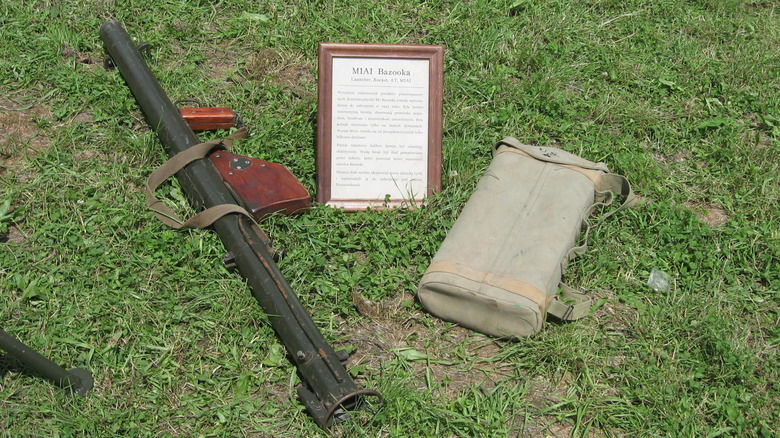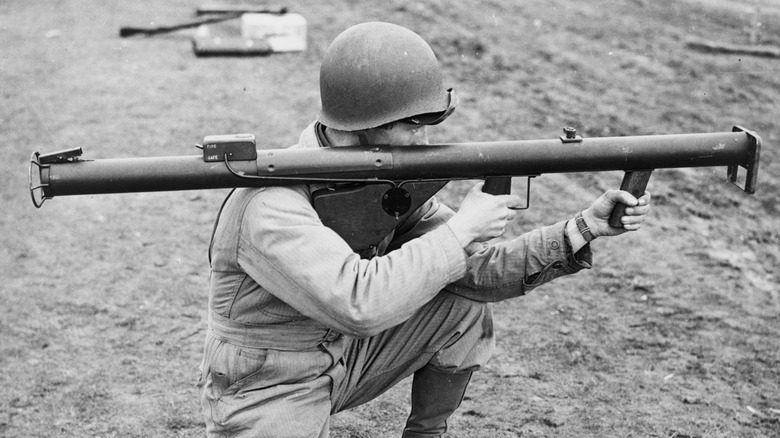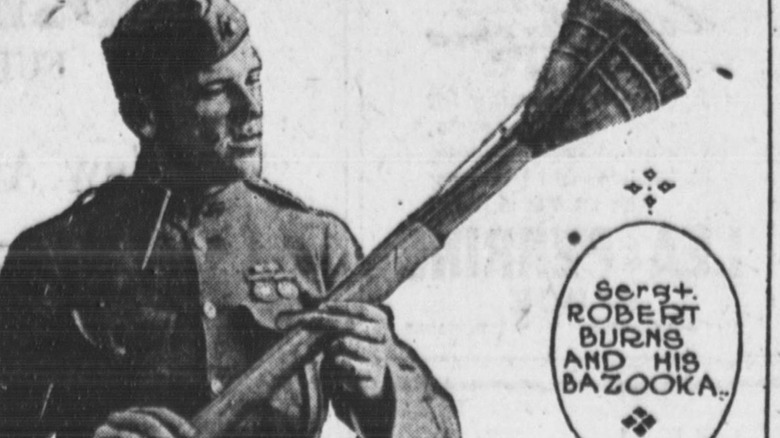Why Were Rocket Launchers Called Bazookas?
When it comes to heavy infantry weaponry in the history of the United States military, there's one name that always manages to stick out: the bazooka. If you've ever watched an action movie or played a shooter video game, you've almost definitely heard the name "bazooka" used to refer to an individual rocket launcher weapon. The weapon originally went into production in the early 1940s, near the end of World War II, where it made its debut launching rockets through the reinforced armor of Axis force tanks.
But what exactly is a bazooka? Technically, the weapon people refer to when they say "bazooka" isn't actually called that — the official name is the M9A1 Rocket Launcher. Why, then, has bazooka persisted throughout the years, becoming a catch-all term for personal artillery weapons? Somewhat amusingly, the term dates back to before World War II, specifically with Bob Burns, a radio comedian and musician who was popular in the United States.
It was thanks to this comedian and his bizarre, homemade instrument that the military personnel assembling the M9A1 Rocket Launchers started passing the name bazooka around.
Bazookas were originally developed to punch through tanks
In 1942, three years after the outbreak of World War II and one year after the United States officially joined the fray, the Allied forces encountered a problem: Dangerous Axis tanks rolling through North Africa were too resilient against their weaponry. While the Allies had plenty of options for explosives like the M7 grenade launcher, nothing could launch an explosive with enough force to punch through the tanks' armor. To remedy this, a new kind of explosives delivery system was developed.
It was a weapon that could launch rockets loaded with pentolite in a powerful, straight line strong enough to penetrate enemy tank armor before detonating. The prototype for this new weapon was developed by Lt. Edward Uhi and Col. Leslie Skinner. The concept was very simple: A five-foot long metal tube with openings on both the front and back, plus a grip and trigger on the bottom. A soldier would mount the tube on their soldier, load a rocket into the front, and pull the trigger to fire it, with the dangerous backblast firing out the other end over their shoulder.
The prototype was quite successful in its trial runs, even with an improvised aiming sight made from an old coat hanger. It was during those trial runs, though, that the soon-to-be realized M9A1 Rocket Launcher would receive its nickname from onlookers.
The name comes from a prop used by a popular comedian at the time
Rewinding a bit, in the mid-1930s, before World War II broke out, a certain comedian was rising in popularity in the United States. This comedian was named Bob Burns, a musician and actor from Arkansas who, during his youth as a plumbing shop employee, invented his very own instrument from a handful of gas fittings and a whisky funnel. This instrument, which apparently produced a sound jokingly likened to a dying forest animal, was named the "bazooka" by Burns.
In 1935, after an appearance on a New York City radio show, Burns and his bazooka swiftly became a household name in the United States, sharing billing with the likes of Bing Crosby on regular radio programs. It's because of this immense popularity in subsequent years that, during the trial runs of the M9A1 Rocket Launcher, an onlooker happened to comment, "it looks like Bob Burns' bazooka."
Naturally, many soldiers in the U.S. Military at the time were fans of Burns' comedy, and in short order, the nickname made the rounds. The bazooka's immense success in fighting back against Axis tanks helped cement the weapon's appearance and name in the minds of the Military. Even after World War II ended, the weapon would continue to see use during the Korean War in the 1950s.


